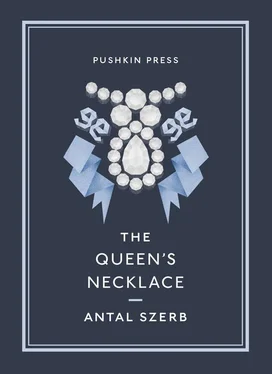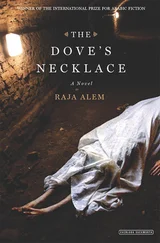Favorite charmante et dangereuse d’une monarchie vieillie, plutôt que d’une monarchie nouvelle, elle n’eut le prestige de l’ancienne royauté, le respect; ni le prestige du nouveau règne: la popularité. Elle ne sut que charmer, égarer, et mourir.
The charming and dangerous favourite of an ageing monarchy, rather than the queen of a new one, she lacked the prestige of old royalty, the respect due to it; and she also lacked the prestige accorded to a new reign — popularity. All she knew was how to charm, to lose her way, and to die.
COMING TO THE END OF OUR STORY and reading through what we have written, we are somewhat alarmed to find that however much we have tried to paint a full and many-sided picture of the age, we have still not really succeeded in placing sufficient emphasis on what Talleyrand called ‘the sweetness of life’. The reader might well be left with the impression that the final hours of the Ancien Régime were careworn and oppressive, a ‘moral wasteland’, a time of drought before the storm, and he would perhaps be glad not to have lived then. Which would be quite wrong. To have been alive then must have been to experience one of the most delightful of European centuries.
Huizinga notes in another connection that ‘chronicles’, that is, works of history written as literature, almost always paint a rather dark picture of our period, because they find its grievances so vivid. Anyone who wants to learn about the brightness, beauty and happiness of a particular age has to turn to the record left by artists. And if we follow the great Dutchman’s advice and compare the painters of various centuries from the ‘eudaemonic’ point of view, would we find any other age whose canvases reflect the sweetness of life with the same intensity as that marvellous line of artists from Watteau to Fragonard?
The painters of eighteenth-century France are not much in fashion nowadays — indeed it is almost in bad taste to mention Boucher, the great master of the mid-century, in the presence of those in the know. And this is perfectly natural. They marked the end of one great period, and after them something quite different began. Far be it from us to argue with those who are better qualified, but all the same we cannot help feeling that the time will come when these painters will once again be of interest. Our concern is not with their relative greatness, but with that sense of the sweetness of life reflected in their pictures.
Watteau and Fragonard … according to the Goncourts they are the only poets of the eighteenth century. The verse writers suffer from the dry rationalism of the period, while these two great artists proclaim what in other ages is the subject matter of poets: the world of dream, fable, intoxication and nostalgia.
Watteau lived at the very start of the century. The great representative of our own period is Fragonard, the delegate from the flower fields of Grasse in perennially happy Provence. With a kind of dreamlike intensity, his works conjure up in our souls the eternal myth of the great woodlands: mighty trees, tiny human and animal figures; the trees bent in sorrow, the men and women depicted beneath them existing in a kind of superhuman joy that almost succeeds in making their baby faces seem serious — a joy that, like music, is almost painful. What makes the paintings of Watteau and Fragonard so special is that they seem to depict scenes from an old novel — very beautiful, subtly erotic, and tinged with melancholy — scenes from some wonderful mythological story such as Psyche and Eros. The viewer is seized by a rich, complex yearning, an intense longing to know their secret, their unspoken mystery, a desire to return to the woodland world that is sweeter than anything in this life, and, finally, the desire for something — one knows not what — that great and inexpressible nostalgia which truly creative art awakens in the soul.
And then it begins to dawn on one: this age was as beautiful as the most finely-worked lace, as a piece of Sèvres porcelain with its timeless charm and fragile delicacy; as the noble oozings of the Tokai grape, full and rich with sweetness; as the autumn air in Hungary, when the reddening leaves are scented with the inexpressible sweetness of death.
Only poetry can express this — nothing else. Verlaine’s lines, from the Fêtes galantes .
Clair de lune
Votre âme est un pays choisi
Que vont charmant masques et bergamasques
Jouant du luth et dansant et quasi
Tristes sous leur déguisements fantastiques.
Tout en chantant sur le mode mineur
L’amour vainqueur et la vie opportune,
Ils n’ont pas l’air de croire à leur bonheur
Et leur chanson se mêle au clair de lune,
Au calme clair de lune triste et beau,
Qui fait rêver les oiseaux dans les arbres
Et sangloter d’extase les jets d’eau,
Les grand jets d’eau sveltes parmi les marbres.
Your soul is a landscape set apart
For charming masques and rustic dances,
Where lovers step and strum their lutes, but seem
Melancholy beneath their fanciful disguises—
Where, even as they sing, in minor key,
Of love victorious and life’s sweet moments,
They seem not to believe in their own happiness,
And their song drifts away in the moonlight—
The calm moonlight, here so sad and beautiful,
That makes the birds dream among the branches,
And jets of water sob with ecstasy
In the tall, slim fountains between the statues.
The necklace trial took place in 1786. Three years later the Revolution broke out.
The revolution was of course ‘carried out’ spontaneously by the people, as an uprising, a devastating volcanic eruption — or more precisely it was the work of the street people of Paris, the dark mob from the St Antoine quarter, the workers who in consequence of a blundering Anglo-French trade agreement were made temporarily unemployed, and who, because of the equally blundering politics of superstition, could not for the time being buy bread; and this was followed on a wider scale by the whole nation, as a people oppressed by local village taxes and emboldened by the example of Paris took revenge for the way they had been ground down over the centuries.
But it would be pushing at an open door to argue that the populace did not rush off into revolution all by itself, but went there because they were led into it; that they were merely an instrument wielded by their superiors; or that, like Victor Hugo’s famous loose cannon, the uprising went on to destroy the very people who set it off. The revolutionaries, as everyone knows, called one another citoyens —citizens — and the essence of and influence behind the revolution was neither popular nor proletarian but bourgeois. It was the middle-class-dominated Third Estate that put an end to the power of the privileged.
The causes of the Revolution are no longer in question. It was not so much that the populace were destitute as that the bourgeoisie were increasingly prosperous. The peasantry certainly had their sufferings, but that had been the case for centuries, and by Louis XVI’s time people were at last beginning to think that it might be necessary to assist them. Moreover, the situation of the agrarian workers was not uniformly bleak. The notorious abuses of the landowners were not everywhere equally oppressive. Wahl draws attention to the fact that around this time the peasantry were turning woods on the great estates over to arable land without asking permission of the squirearchy and without resistance from them. The institution of serfdom, which the peoples of Central and Eastern Europe had suffered for so long, was by now confined to the easternmost provinces. Louis XVI had freed his own serfs, and his example had been spontaneously followed by many aristocrats. The remainder were given their freedom wherever there was enough money in the Treasury to compensate landowners.
Читать дальше












